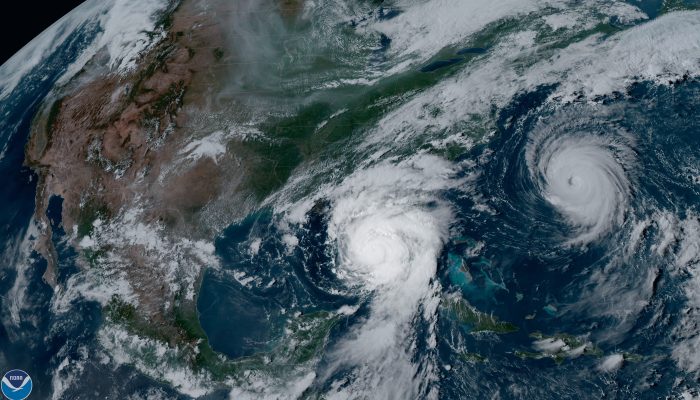Atlantic hurricane season begins June 1 and runs through the end of November. The Philadelphia Office of Emergency Management wants you to prepare for these powerful tropical cyclones and other damaging severe storms that occur during this time.
The National Oceanic and Atmospheric Administration recently issued its first outlook for the hurricane season, saying 2024 could be above normal due to a La Nina storm system and warmer-than-average ocean temperatures in the Atlantic Ocean.
Also just announced, the National Hurricane Center will offer updates to their products and services for the 2024 season, including new Spanish text products, issuance of watches and warnings on intermediate advisories, and an experimental cone graphic depicting inland watches and warnings in the United States to help you monitor a storm’s progress as it develops.
Storms become hurricanes once their maximum sustained wind speed reaches at least 74 mph and are categorized from 1 to 5. The higher the category, the greater the chance for property damage. In addition to wind damage, hurricanes can produce devastating flooding. However, a powerful storm can create damage even if it’s not classified as a hurricane due to lower wind speeds.
Heavy rain, high wind gusts, rising waterway levels, hail, and tornadoes can happen inland, away from where a hurricane makes landfall.
“We want to remind residents and businesses that we are concerned about not only named hurricanes but all severe storms that could impact our health, safety, economy, and daily lives,” said Dominick Mireles, Director of the Office of Emergency Management. “Understanding the hazards of these powerful storms, along with being thoroughly prepared by having a plan and staying connected to important official information is critical,” Mireles added.
Now is the time to prepare for hurricane season. Start with some simple steps from our Community Engagement division.
- Insurance Check-up. All homeowners and renters can purchase flood insurance regardless of where you live. Most standard home insurance policies or rental agreements do not include flood insurance. Be aware it can take 30 days for insurance to take effect. Visit the National Flood Insurance Program to find out more.
- Understand Alerts and Warnings. Sign up for free email or phone alerts from the City of Philadelphia to get National Weather Service (NWS) and other important information. Text READYPHILA to 888-777 for phone alerts or customize your email or text alerts, including flood levels for the Schuylkill and Delaware rivers, by visiting OEM’s website www.phila.gov/ready. Our office, the NWS, or other authorized agencies may utilize the Emergency Alert System (EAS) and Wireless Emergency Alert (WEA), which require no sign up. WEA messages are available in English and Spanish currently. To receive messages in Spanish, you must choose your preferred language in your phone’s settings.
- Create an Emergency Plan. Make sure everyone in your house is aware of emergency plans that include having a home shelter-in-place kit, go bag, and where to go if you need to evacuate. Find resources to help you plan on our website.
- Review Important Documents. Make sure your insurance policies and personal documents, such as ID, are up to date. Make copies and keep them in a secure password-protected digital space. You might need your documents to apply for and receive assistance after a disaster.
- Get Connected. Stay aware of important preparedness tips along with official information from the city before, during, and after an emergency with free resources direct from OEM, including our monthly community newsletter.
As a storm approaches, take action around your residence or property to help lessen the impact of severe storms. Ensure you have a sufficient supply of medication and that any battery-powered medical devices are charged. De-clutter drains and gutters at your home and clear sewer entrances on your block. Secure or bring in outside furniture or outdoor items. Make sure your valuables, electronics, and appliances are above the floor in your basement or the lowest level of your home by using shelving units or plastic storage totes. Move your vehicle to a higher location away from low-lying locations like underground garages or an underpass.




